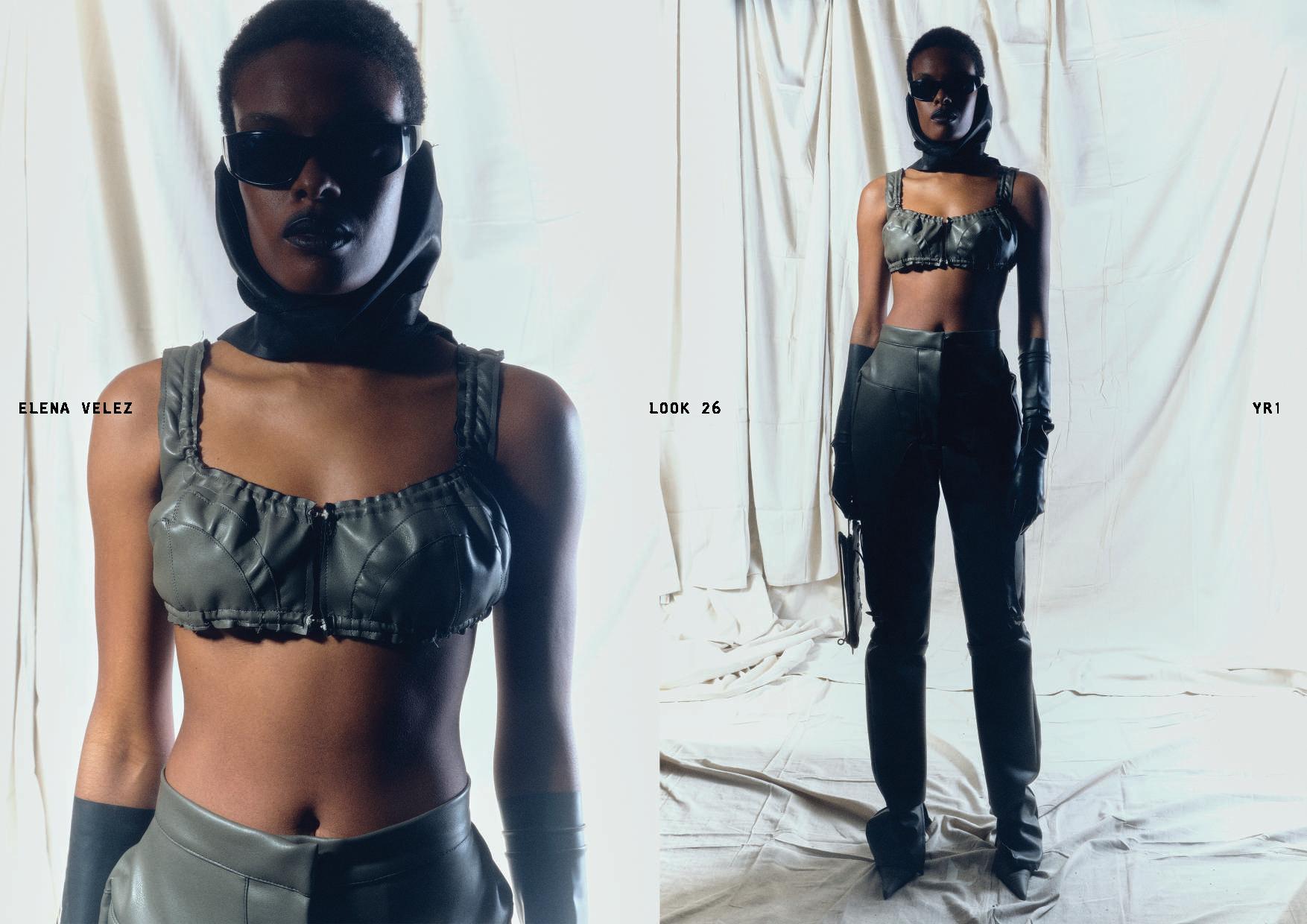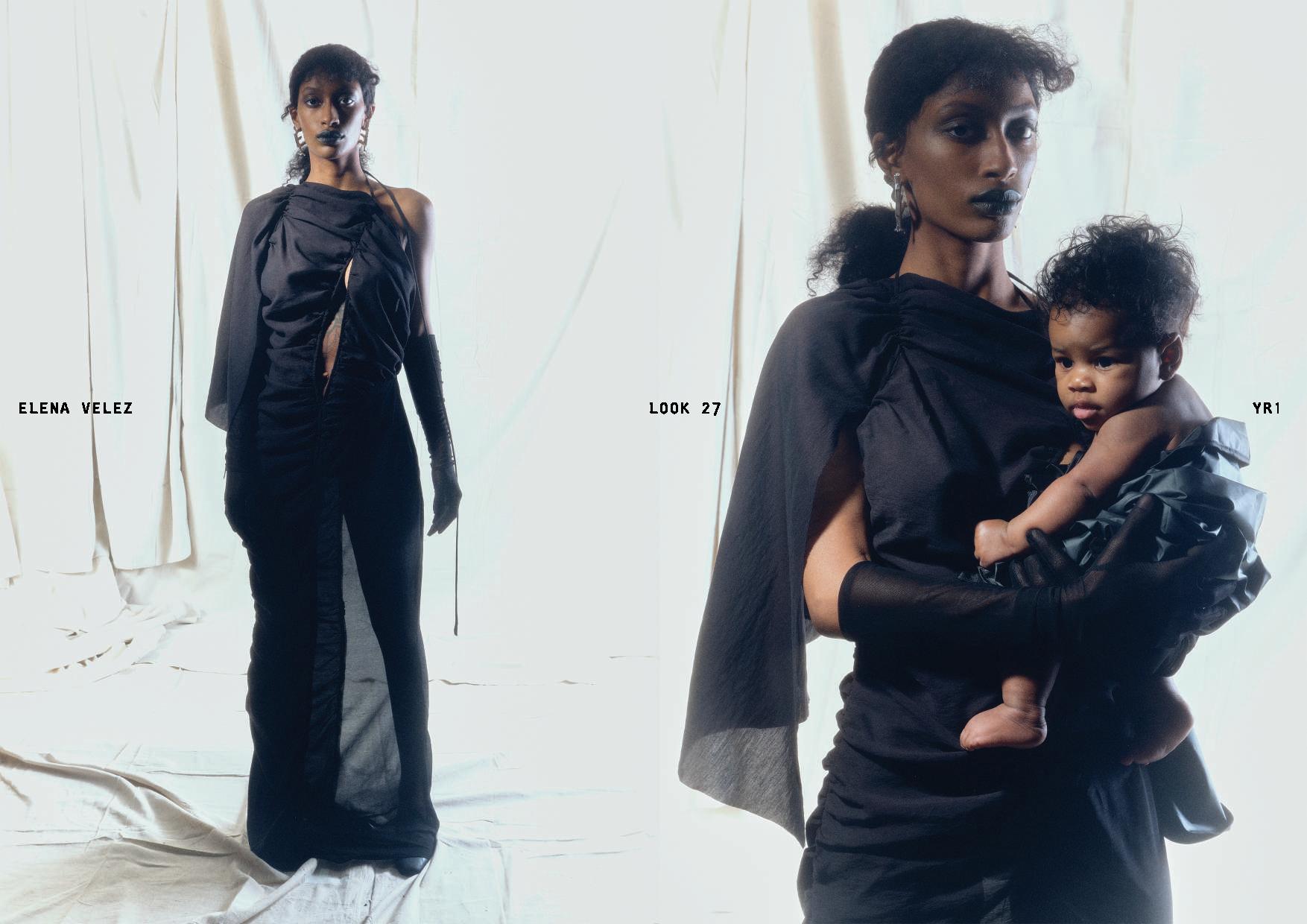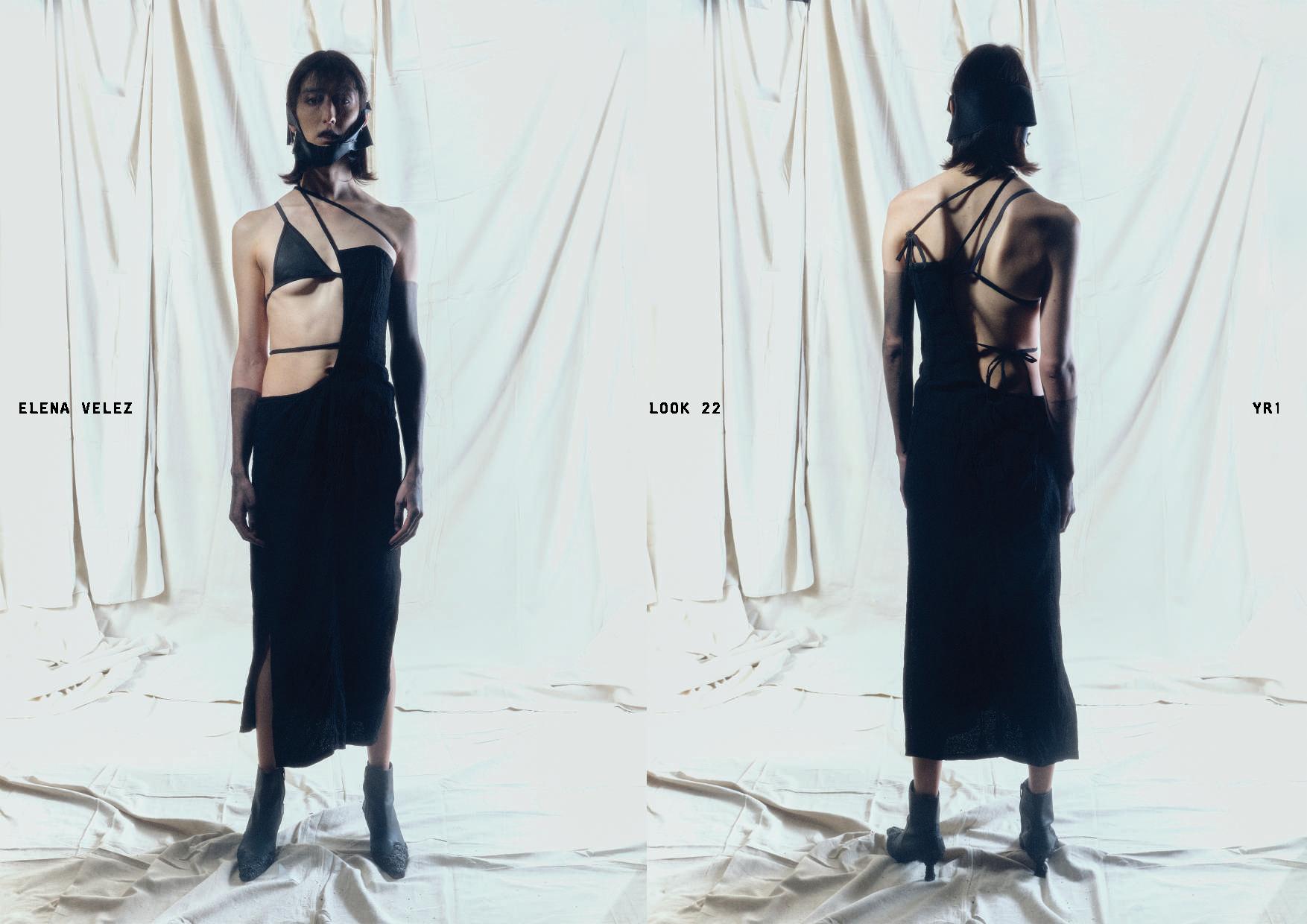Elena Velez is making her mark not only in New York City but also in Milwaukee, as she introduces Midwest natives to fashion through her eponymous brand, which resists traditional femininity and beauty standards. Velez welcomes unique and unlimited ideas of femininity into her brand’s identity.
In what ways does your eponymous brand Elena Velez oppose who society constantly attempts to restrict women to be? How much of yourself have you poured into the foundation of your brand?
I think there is a certain urgency to this sort of brash femininity that I express through my work which comes from a lack of identification with the narratives of womanhood I experience within my generation. Coming from the blue collar Midwest, the archetypal woman who helped me construct my identity was relentlessly capable, indelicate, ornery, and willful. The stories I tell through each collection are allegorical – chronicles of womanhood as I experience out in the world, informed by the legacy of both the matriarchy I come from and the one that I am building.
What are your advantages of being a native of Milwaukee, WI, ? How have these advantages influenced your perspectives of America’s fashion system?
I think that the fact that I embrace and reject the notion of an unglamorous midwestern upbringing in my work lends itself to some degree of differentiation from other American designers who might think that creative assimilation is the key to success in a luxury industry. This is a Wisconsin brand, not a New York brand. We are living in an era of radical individualism and an appetite for ‘otherness.’
Our post-pandemic relationship with physical space, geopolitics, and confrontation with our self image as Americans also make it a great time creatively to explore subcultures beyond the coasts. The idea of home is so essential to my work. It is the origin of my design identity and the contextual framing device that I use to tell all of my stories from. Being from flyover country and believing in my youth that success in an industry like fashion would require concealing that fact led me to construct inauthentic narratives that just did not connect.
What initially drove you to welcome unique and unlimited ideas of femininity? What inspires you to celebrate these ideas in fashion especially as feminine signifiers have been heavily associated with fashion?
Conceptually the brand is built on paradoxical childhood observations of my mother who operates as a ship captain on the great lakes. Unsure of how to place my mother in my early understanding of femininity, the work is a reconciliation between a child’s singular image of a woman’s beauty: sensitive, fragile, delicate and refined, versus a learned appreciation for its broader spectrum: strong, dexterous, raw and unapologetically real.
Interpreting this tension between masculine and feminine runs through the core of our creation process which seeks to create with the tactile sensitivity of a maker who prioritizes functionality and utility over perfection or beauty. The resulting codes are anti-beautiful, artisanal, industrial, and era agnostic.
How do your everyday experiences as a Mid-Western woman and designer challenge the feminine adoration of fashion? What design techniques and aesthetics represent your beliefs that femininity can mirror toughness and aggressiveness?
Translating the tension between femininity and force informs so many of the tactile choices we make. We often pair light cotton gauzes and utility silks with distressed wools and salvaged canvases – a tactile intersection of woman’s traditionally esteemed beauty: fragile, diaphanous, delicate & pliable versus the qualities I have inherited through the exemplar of my community: resoluteness, texture, density, and gravity.









